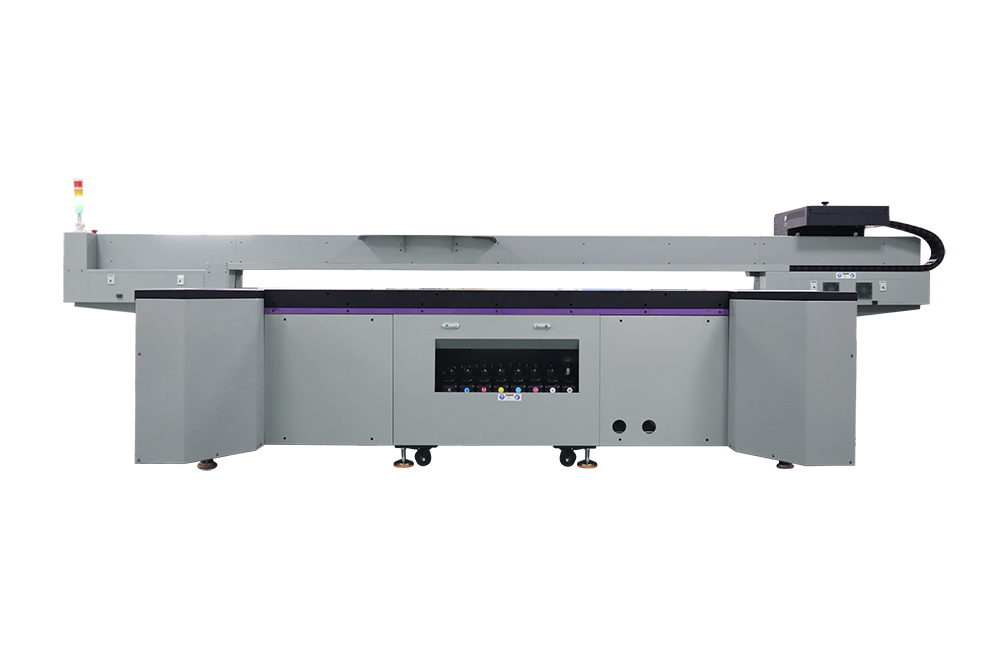UV Flatbed Printer: Understanding Media Compatibility
UV Flatbed Printer: Understanding Media Compatibility
In the realm of digital printing technology, UV flatbed printers have emerged as a versatile and efficient solution for producing high-quality prints on a wide range of media. These printers utilize ultraviolet (UV) curing technology, which involves the use of UV light to instantly dry or cure ink as it is applied to the substrate. This process not only accelerates production time but also enhances the durability and quality of the prints, making UV flatbed printers a popular choice for various applications, including signage, packaging, and decorative printing.

Understanding media compatibility is crucial when working with UV flatbed printers, as it directly impacts the quality and effectiveness of the final print. Media compatibility refers to the ability of the printer to adhere ink effectively to different types of materials, ensuring optimal print quality and longevity. This article delves into the intricacies of media compatibility in UV flatbed printing, exploring the factors that influence it and the types of media commonly used.
Factors Influencing Media Compatibility
Several factors contribute to the compatibility of a substrate with UV flatbed printing technology. These include the material’s surface tension, porosity, chemical composition, and temperature resistance.
Surface Tension and Porosity: The surface tension of a material affects how well the ink can adhere to it. Materials with low surface tension may require pretreatment to improve ink adhesion. Porosity, on the other hand, refers to the material’s ability to absorb ink. Highly porous materials might absorb ink too quickly, leading to poor color saturation, while non-porous materials might not allow ink to adhere properly.
Chemical Composition: The chemical composition of the substrate can influence its reaction with the ink. Some materials may contain chemicals that react with the ink, causing discoloration or degradation. It is essential to ensure that the media is compatible with UV inks to avoid such issues.
Temperature Resistance: UV inks cure under the influence of UV light, which generates heat. Therefore, the media must be able to withstand the temperatures reached during the curing process without warping, cracking, or otherwise degrading.
Common Types of Media for UV Flatbed Printing
UV flatbed printers can accommodate a broad spectrum of media, ranging from rigid substrates to flexible materials. Here are some of the most commonly used media types:
Rigid Substrates:
Acrylic: A popular choice for signage and display applications due to its transparency and durability.
Glass: Used for high-end decorative and architectural applications, offering a sleek and modern appearance.
Wood: Provides a natural and warm look, suitable for interior decoration and furniture customization.
Metal: Including aluminum and stainless steel, metals are used for outdoor signage and industrial labeling due to their robustness.
Rigid Plastics: Such as PVC and polystyrene, these materials are versatile and cost-effective for various printing needs.
Flexible Media:
Vinyl: Widely used for vehicle wraps, banners, and outdoor advertising due to its weather resistance and flexibility.
Fabric: Ideal for soft signage, flags, and textiles, offering a wide range of textures and finishes.
Leather and Synthetic Leather: Used for personalized goods, upholstery, and fashion accessories.
Paper and Cardboard: Although less common, certain grades of paper and cardboard can be used for short-term applications like posters and packaging prototypes.
Specialty Media:
Ceramic and Tile: Used for decorative wall coverings and floor graphics.
Foam Board: A lightweight and cost-effective option for mounting and display purposes.
Magnetic Sheets: Useful for temporary signage and promotional materials that can be easily removed and repositioned.
Ensuring Media Compatibility: Best Practices
To ensure optimal media compatibility and print quality, consider the following best practices:
Test Before Production: Always perform test prints on the chosen media to assess ink adhesion, color accuracy, and overall print quality.
Pretreatment and Priming: Some media may require pretreatment or the use of primers to improve ink adhesion. Consult with your printer manufacturer or ink supplier for recommendations.
Temperature and Humidity Control: Maintain a consistent temperature and humidity level in your printing environment, as these factors can affect ink curing and media stability.
Media Preparation: Ensure that the media is clean, dust-free, and properly prepared according to the manufacturer’s guidelines before printing.
Ink and Printer Compatibility: Use inks and coatings specifically designed for UV flatbed printing and ensure that your printer is equipped to handle the media type you intend to use.
Conclusion
UV flatbed printers offer unparalleled versatility and efficiency in digital printing, capable of producing high-quality prints on a wide array of media. Understanding media compatibility is paramount to achieving optimal print results, as it influences ink adhesion, color accuracy, and print longevity. By considering factors such as surface tension, porosity, chemical composition, and temperature resistance, and by following best practices in media preparation and handling, users can unlock the full potential of UV flatbed printing technology, creating stunning and durable prints across a diverse range of applications. As technology continues to advance, the possibilities for UV flatbed printing on various media will only continue to grow, further expanding its reach and impact in the printing industry.
